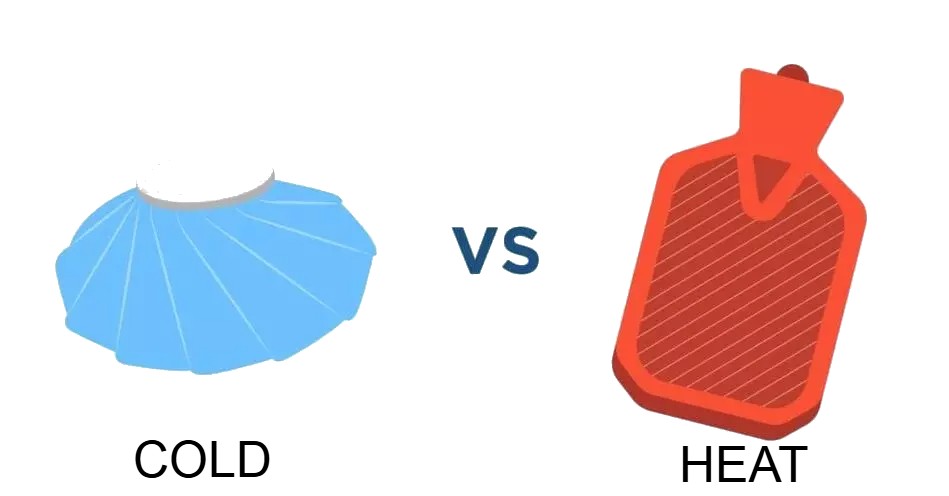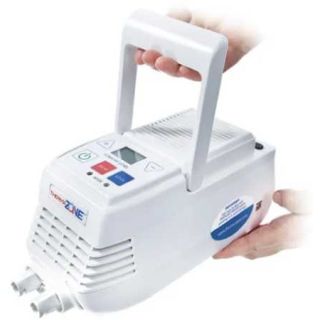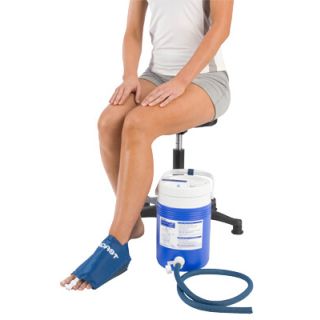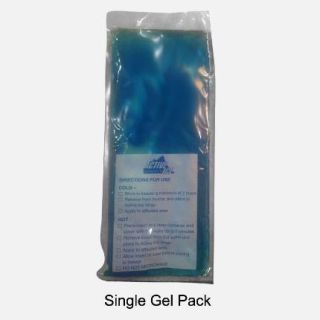Alternating Hot And Cold Therapy
April 16, 2025Alternating Hot and Cold Therapy: A Comprehensive Guide to Pain Relief
Alternating hot and cold therapy, often called contrast therapy, is a versatile treatment that combines the benefits of heat and cold to manage pain, reduce inflammation, and promote healing. By applying hot cold therapy in a controlled sequence, individuals can address a range of conditions, from muscle soreness to joint injuries. This article explores how alternating hot and cold therapy works, its benefits, applications, and best practices for optimal results.
What Is Alternating Hot and Cold Therapy?
Alternating hot and cold therapy involves switching between heat and cold applications to stimulate blood flow, reduce swelling, and relax tissues. The hot cold treatment leverages the contrasting effects of temperature: cold constricts blood vessels to reduce inflammation, while heat dilates them to improve circulation. This push-pull effect, sometimes referred to as hot cold hot therapy, enhances the body’s natural healing processes.
The therapy is commonly used for injuries, chronic pain, and post-exercise recovery. By cycling between temperatures, the body experiences a “pumping” action—cold reduces fluid buildup, and heat flushes out toxins while delivering nutrients. This makes it a powerful tool for conditions like sprains, arthritis, and muscle strains.
How Alternating Hot and Cold Therapy Works
The science behind alternating hot and cold therapy lies in its impact on blood vessels and tissue response. Here’s how each component contributes:
-
Cold Therapy: Applying a cold pack narrows blood vessels (vasoconstriction), reducing blood flow to the area. This decreases swelling, numbs pain, and calms inflammation, making it ideal for acute injuries or flare-ups.
-
Heat Therapy: Warmth widens blood vessels (vasodilation), increasing blood flow. This delivers oxygen and nutrients to tissues, relaxes muscles, and reduces stiffness, which is beneficial for chronic conditions or post-injury recovery.
When alternated, these therapies create a dynamic response. Cold reduces excess fluid, and heat promotes circulation to clear metabolic waste. The cold warm therapy cycle stimulates the lymphatic system, aiding recovery. For example, a typical session might involve 10 minutes of cold followed by 10 minutes of heat, repeated for 2–3 cycles.
Benefits of Alternating Hot and Cold Therapy
Alternating hot and cold therapy offers unique advantages compared to using heat or cold alone. Key benefits include:
-
Enhanced Pain Relief: Cold numbs nerve endings for immediate relief, while heat soothes deeper discomfort, making it effective for both acute and chronic pain.
-
Reduced Inflammation and Swelling: Cold therapy controls swelling in injuries like sprains, and heat prevents stiffness as inflammation subsides.
-
Improved Circulation: The alternating temperatures create a flushing effect, boosting blood flow to speed up healing.
-
Muscle Relaxation: Heat loosens tight muscles, while cold prevents spasms, benefiting conditions like back pain or post-workout soreness.
-
Versatility: The therapy suits various conditions, from sports injuries to arthritis, offering a non-invasive, drug-free option.
This approach is particularly effective when inflammation and stiffness coexist, as it addresses both symptoms in one session.
Best Applications for Alternating Hot and Cold Therapy
Alternating hot and cold therapy is suitable for a range of conditions, but timing and context matter. Here are the most common uses:
-
Subacute Injuries (3–7 Days Post-Injury): After the initial 48–72 hours of an injury (e.g., ankle sprain or muscle strain), when swelling is under control, alternating therapy helps transition to healing. Cold reduces residual inflammation, and heat promotes tissue repair.
-
Chronic Pain Conditions: For arthritis, fibromyalgia, or tendinitis, hot cold compress therapy relieves stiffness and soothes flare-ups without worsening inflammation.
-
Post-Exercise Recovery: Athletes use contrast therapy to reduce delayed-onset muscle soreness (DOMS). Cold minimizes microtrauma swelling, and heat relaxes tight muscles.
-
Post-Surgical Recovery: After swelling subsides (typically 3–5 days post-surgery), alternating therapy can aid healing by improving circulation while preventing stiffness, though always under medical guidance.
-
Muscle Spasms: Alternating temperatures can break the cycle of spasms by relaxing muscles and calming nerve activity.
Contrast therapy is less suited for acute injuries (first 48 hours) or open wounds, where cold alone is typically recommended.
How to Perform Alternating Hot and Cold Therapy
Proper technique ensures safety and effectiveness. Follow these steps to apply alternating hot and cold therapy:
-
Gather Supplies: Use a hot cold compress (dual-purpose gel pack), separate hot and cold packs, or warm/cold water basins. A towel or cloth is essential to protect the skin.
-
Start with Cold: Begin with a cold pack for 10 minutes to reduce inflammation. Wrap it in a cloth to avoid frostbite and place it on the affected area (e.g., knee, shoulder, or back).
-
Switch to Heat: Apply a warm pack for 10 minutes to relax tissues and boost blood flow. Ensure the heat is comfortable, not scalding (ideal range: 104–113°F or 40–45°C).
-
Repeat the Cycle: Alternate for 2–3 cycles, typically ending with cold to prevent inflammation, especially for injuries. For chronic pain, ending with heat may enhance relaxation.
-
Timing and Frequency: Perform sessions 1–2 times daily, depending on the condition. Each cycle should last 20–30 minutes total.
-
Monitor Skin: Check for redness, numbness, or irritation. Remove the pack immediately if discomfort occurs.
For water-based therapy (e.g., soaking an ankle), use basins of cold water (50–60°F or 10–15°C) and warm water (98–104°F or 37–40°C), alternating every 1–2 minutes for 15–20 minutes.
Tools for Alternating Hot and Cold Therapy
Choosing the right tools enhances the therapy’s effectiveness. Popular options include:
-
Gel Packs: Reusable gel packs can be frozen or microwaved for dual use. Brands like ThermaCare or FlexiKold offer durable options that stay flexible.
-
Hot/Cold Wraps: Wraps with adjustable straps (e.g., for knees or shoulders) secure the pack in place, allowing mobility. Look for ones labeled for hot cold therapy.
-
Water Therapy Devices: Contrast baths or whirlpools are ideal for hands, feet, or ankles, providing even temperature distribution.
-
Electric Heating Pads with Cooling Options: Some devices combine heat with cooling elements, though they’re pricier.
-
DIY Solutions: A bag of frozen peas for cold and a warm towel for heat work in a pinch, though they lack the precision of commercial products.
Always follow product instructions, especially for microwavable packs, to avoid burns or leaks.
Risks and Precautions for Alternating Hot and Cold Therapy
While generally safe, alternating hot and cold therapy requires caution to prevent injury:
-
Burns or Frostbite: Never apply heat or cold directly to the skin. Use a cloth barrier, and ensure heat sources aren’t too hot (above 113°F/45°C can burn).
-
Overuse: Prolonged sessions (over 30 minutes) can damage tissues or nerves. Stick to recommended times.
-
Medical Conditions: Avoid contrast therapy if you have poor circulation, diabetes, heart disease, or sensory issues, as these increase burn or frostbite risk. Consult a doctor first.
-
Acute Inflammation: Don’t use heat in the first 48 hours of an injury, as it can worsen swelling. Start with cold alone.
-
Skin Sensitivity: Check for allergies to gel pack materials or skin conditions like eczema that could worsen with temperature changes.
If pain or swelling persists after a few days, seek medical advice to rule out serious issues.
Combining Alternating Hot and Cold Therapy with Other Treatments
For best results, integrate contrast therapy into a broader recovery plan:
-
Rest and Elevation: Rest the affected area and elevate it (e.g., for ankle injuries) to reduce swelling alongside therapy.
-
Compression: Use wraps or bandages to stabilize joints and enhance the effects of cold therapy.
-
Exercise: Gentle stretching or physical therapy, prescribed by a professional, can restore mobility after initial inflammation subsides.
-
Medications: Over-the-counter anti-inflammatories like ibuprofen can complement therapy for pain and swelling.
-
Hydration and Nutrition: Staying hydrated and eating anti-inflammatory foods (e.g., berries, fish) supports tissue repair.
Contrast therapy works best when tailored to the injury stage—cold-heavy for early recovery, heat-heavy for chronic stiffness.
When to Seek Professional Help
While alternating hot and cold therapy is effective for mild to moderate issues, certain symptoms require medical attention:
-
Severe pain or swelling lasting over 48 hours.
-
Inability to move the joint or bear weight.
-
Signs of infection (redness, warmth, fever).
-
Persistent stiffness or pain despite therapy.
A doctor or physical therapist can diagnose underlying conditions and recommend advanced treatments, such as imaging, injections, or surgery.
Conclusion
Alternating hot and cold therapy, or hot cold treatment, is a powerful, accessible method for managing pain and promoting recovery. By leveraging the benefits of heat therapy to relax tissues and cold therapy to reduce swelling, this approach addresses both inflammation and stiffness. Whether using a hot cold compress for a sprained ankle, sore muscles, or arthritis, proper technique—10-minute cycles, skin protection, and moderation—ensures safety and effectiveness. Paired with rest, compression, and professional guidance, cold warm therapy can accelerate healing and improve comfort, making it a go-to solution for many. Always consult a healthcare provider for persistent symptoms to ensure the best care plan.
Additional Resources:





